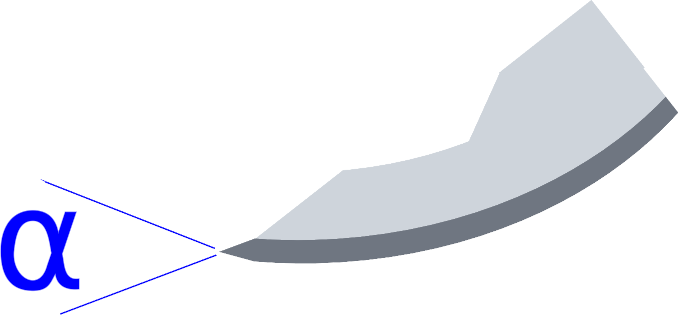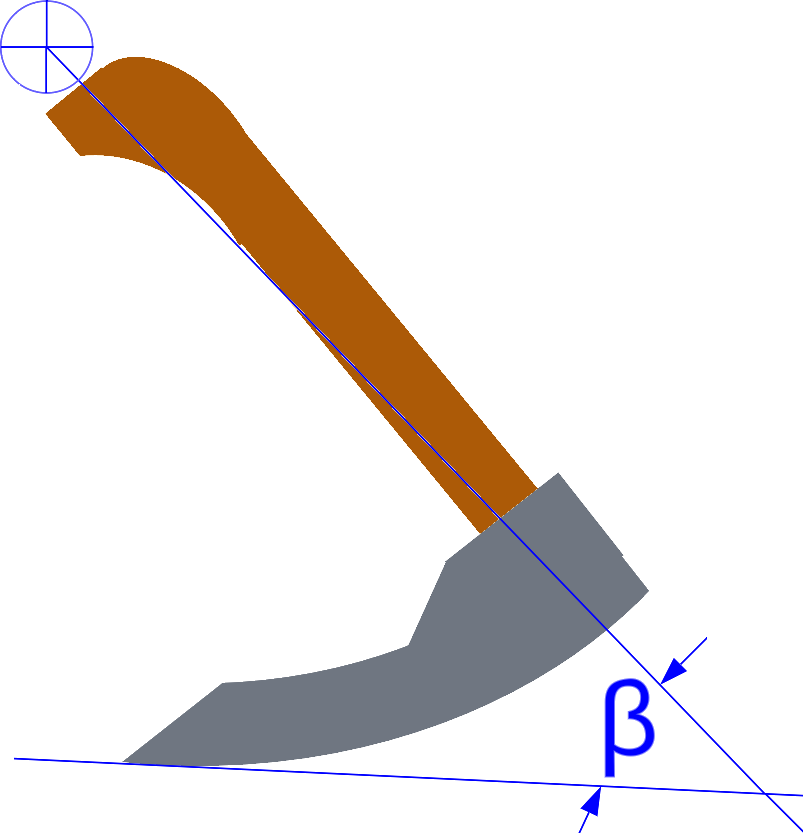

|
|
Adze |
The Adze is a tool which is swung about a pivot point when used, and has two key angles, α and β.

Edge Angle
The effective angle at the cutting edge. The inside and outside edges will probably be cleaned up and polished; however this is the effective angle between those edges.
When resharpening, try to to not change the β angle:

Handle Angle
The angle between the handle and the cutting edge. As the adze is a tool which is swung about some pivot point, this angle has a great impact on the usability of the tool.
The angle needed for β is out of scope of the Sharpening Handbook, however, there are articles below which address how this can be determined, and how to set it.
|
It requires a genuine fight to produce one well-designed object of relatively permanent value. George Nakashima |
When resharpening, it is best to only work on the inside part of the bevel. Modifications to the outside part of the bevel (the back bevel) could adjust the β angle, also known as the “hang” of the adze.
Having a bevel on the outside of the tool allows it to be better used for shallow scalloping work. The article by Dave Fisher in “Fine Woodworking” magazine shows this well.

Lipped Adze
To sharpen a lipped adze (also known as a shipwright's adze, and used for cutting across the grain), see the instructions in The Complete Guide to Sharpening by Leonard Lee. The recommended α angles follow those noted above; however the directions are a bit difficult to describe.
Sharpness scales (as shown in the grey icon to the left) are used to indicate the recommended sharpness for the blades noted above. You can click on any of the icons showing the sharpness scale and be redirected to the page describing this more. Lower numbers are duller; higher numbers sharper.
These are general recommendations; you will need to use your own judgment, based on the knive’s intended purpose.
Note: Dave was not merely resharpening the tool; rather he had to do some fairly significant reshaping to the tool's cutting edge. If you do such do such modifications to a tool, be sure to manage the heat so that you don't lose the temper in the metal.